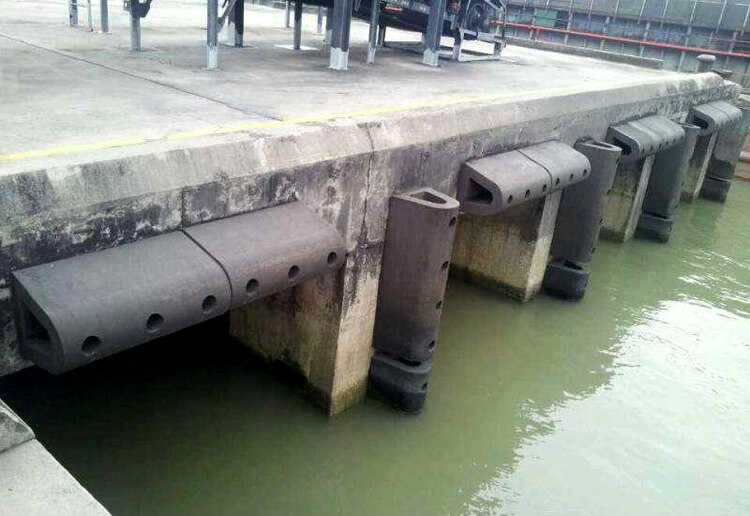
The production of marine rubber fenders has moved from the manufacturers that developed them to lower-cost producers, with no heritage knowledge of the products they currently make. This has created a disjoint between the manufacturers and the people that design and sell the end products. Complicating matters, there are no true standards governing the ‘nuts and bolts’ of fender design. There is little to assist in the design of cost-effective fenders. Furthermore, there is little understanding of neither what actually causes fenders to fail, nor how buyers can optimize their fender lifetimes.
Standards are of little practical help
The bad news for those looking to invest in new fenders is that the most critical issues for successful rubber marine rubber fenders are not covered in any standard. Current standards and guidelines deal primarily with broad theories and virtually not at all with the simple details that make virtually all the difference between troublesome and robust designs.
The only extant standards deal with these general theories, the proprietary design of specific rubber fender elements (not the entire fender), and/or the assessment of the energy capacity of fender elements. The most widely used guideline for the design of fender systems is Guidelines for the Design of Fenders (sic) Systems: 2002, published by the International Navigation Association (PIANC). It gives guidelines for determining energy requirements, but no details of how to design a fender system. Its six-page Appendix A, ‘Procedure to Determine and Report the Performance of marine rubber fenders’ is the only section of this seventy page document familiar to most fender specifiers. However, not only is Guidelines…not a standard, but due to errors in the final editing process, two critical sections were reversed. The result is that for the majority of testers a critical part of the procedure description is likely unintelligible. Thus, its actual usefulness is limited.
This is not as much of a problem as it otherwise would be, because the same year Gudelines… was published, ASTM International, the largest standards-writing organization in the world, issued Standard F 2192, ‘Standard Test Method for Determining and Reporting the Berthing Energy and Reaction of marine rubber fenders’. An important revision was issued in 2005. This is the document that the performance testing part of Appendix A was intended to be, and it is the only standard for determining the performance of marine rubber fenders.
ISO 9000 certification is not necessarily any assurance. Achieving ISO 9000 status requires that a manufacturer produce a consistently-repeatable product, and document it, but does not require that it make a product that is fit for service. On balance, it is better than nothing but not a magic bullet.
My own experience has led me to believe strongly that all the worry about measuring fender energy and reaction is a tempest in a teapot. Investigations of many fender problems, multiple types and manufacturers show that inadequate fender performance (energy and reaction) is almost never the primary cause of fender problems.
Also, seldom is fender compression deflection a cause of fender failure. Often specifications stipulate that fender deflection shall not exceed a certain percent of undeflected height (for durability concerns). Actually, fenders designed to have a greater rated deflection operate at a lower strain and stress level than ones designed to deflect less.
Specifying rubber
The ultimate useful life potential of any rubber product is controlled by its chemistry. Aging and ozone resistance of the rubber, from which fender elements are molded, are two of the most important criteria that determine useful life potential. Most fender specifications don’t specify rubber ozone resistance at all, and many specify an acceptable aging resistance that is considerably lower than it could be for maybe one percent higher cost.v
For more professional information, please visit the page of ysmarines.com.
